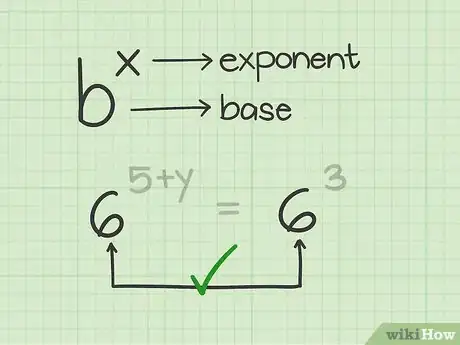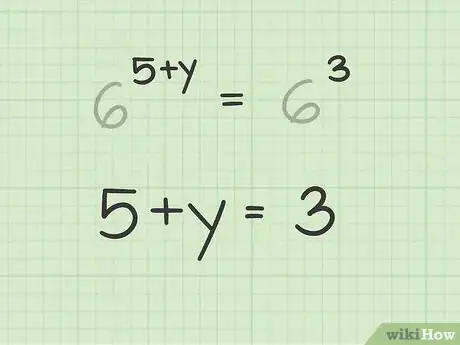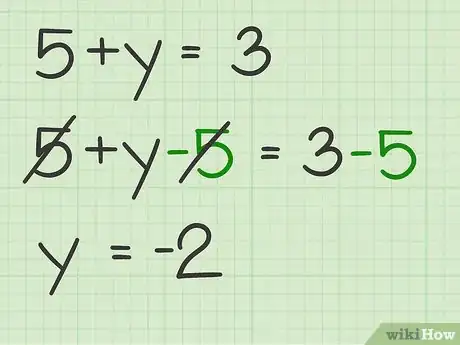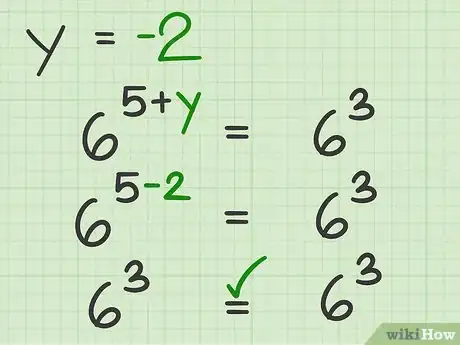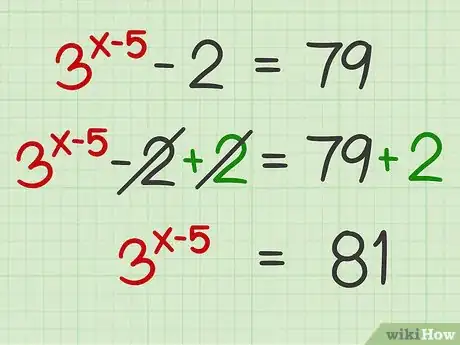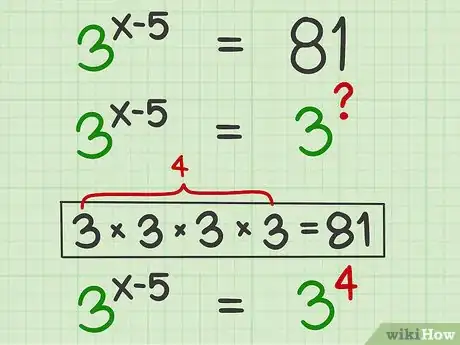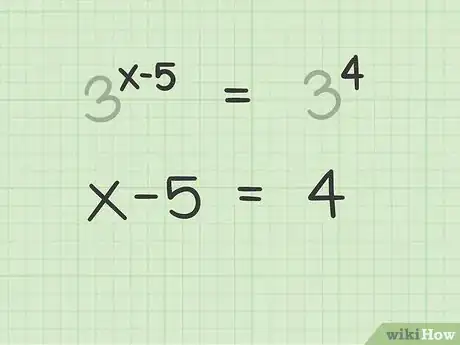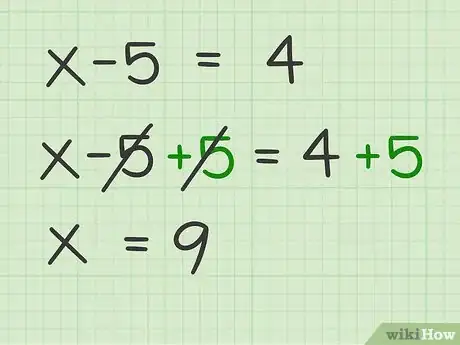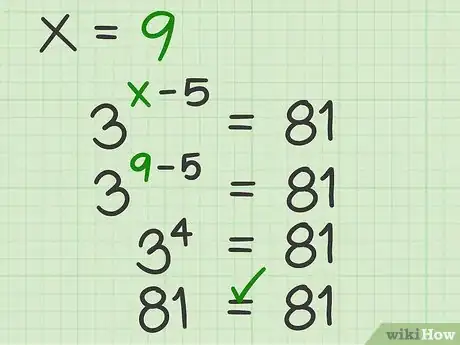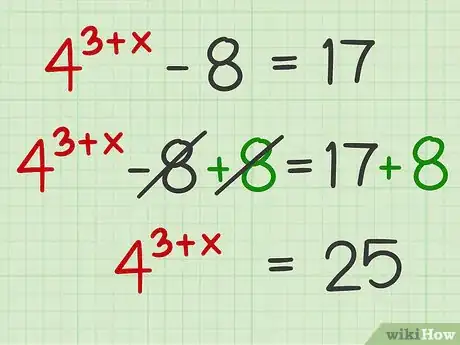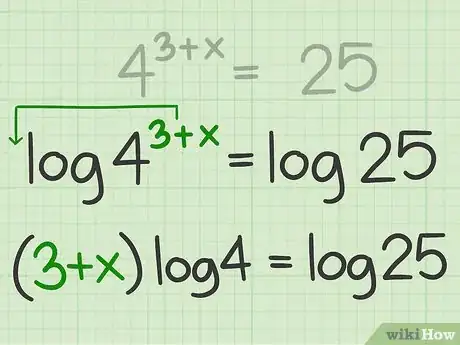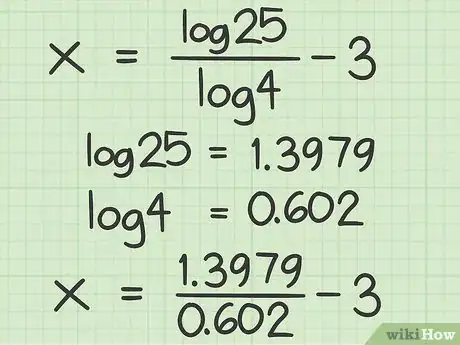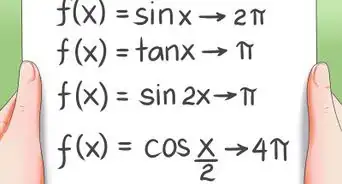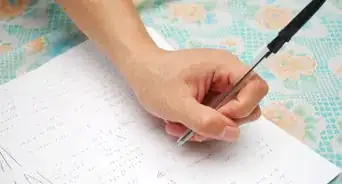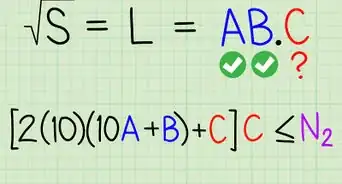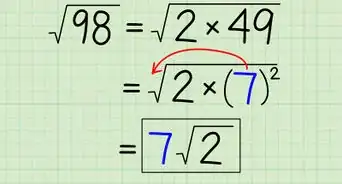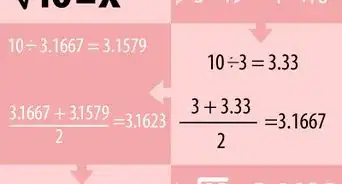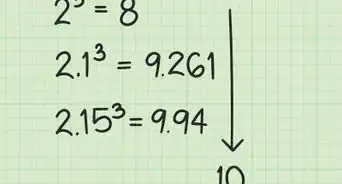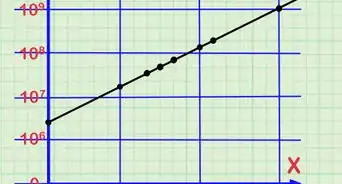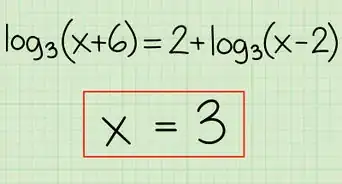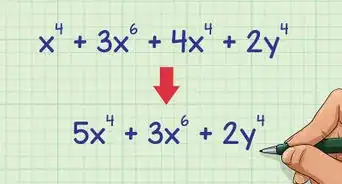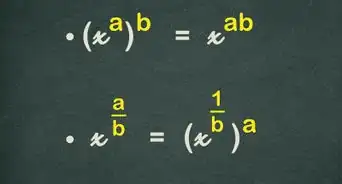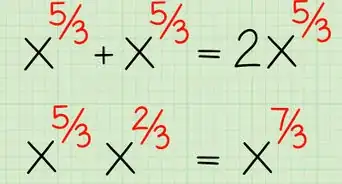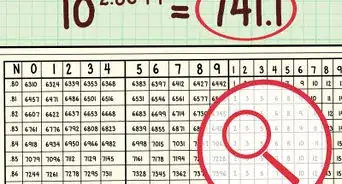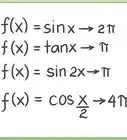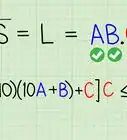This article was co-authored by David Jia. David Jia is an Academic Tutor and the Founder of LA Math Tutoring, a private tutoring company based in Los Angeles, California. With over 10 years of teaching experience, David works with students of all ages and grades in various subjects, as well as college admissions counseling and test preparation for the SAT, ACT, ISEE, and more. After attaining a perfect 800 math score and a 690 English score on the SAT, David was awarded the Dickinson Scholarship from the University of Miami, where he graduated with a Bachelor’s degree in Business Administration. Additionally, David has worked as an instructor for online videos for textbook companies such as Larson Texts, Big Ideas Learning, and Big Ideas Math.
There are 8 references cited in this article, which can be found at the bottom of the page.
This article has been viewed 123,922 times.
Exponential equations may look intimidating, but solving them requires only basic algebra skills. Equations with exponents that have the same base can be solved quickly. In other instances, it is necessary to use logs to solve. Even this method, however, is simple with the aid of a scientific calculator.
Steps
Equating Two Exponents with the Same Base
-
1Determine whether the two exponents have the same base. The base is the big number in an exponential expression.[1] You can only use this method when you are presented with an equation that has an exponent on either side, and each exponent has the same base.
- For example, has an exponent on either side of the equation, and each exponent has the same base (6).
-
2Ignore the base. Since the exponents are equal and have the same base, their exponents must be equal. As such, you can ignore the base and write an equation for the exponents only.[2]
- For example, in the equation , since both exponents have the same base, you would write an equation for the exponents: .
Advertisement -
3Solve the equation. To do this, you need to isolate the variable. Remember that whatever you do to one side of an equation, you must do to the other side of the equation.[3]
- For example:
- For example:
-
4Check your work. To make sure that your answer is correct, plug the value you found for the variable back into the original equation, and simplify the expression. The two sides should be equal.[4]
- For example, if you found that , you would substitute for in the original equation:
- For example, if you found that , you would substitute for in the original equation:
Equating an Exponent and a Whole Number
-
1Isolate the exponential expression. Make sure that there is an exponential expression on one side of the equation, and a whole number on the other side. If not, you need to rework the equation so that the exponent is alone on one side.[5]
- For example, if your are trying to solve , you first need to isolate by adding 2 to each side of the equation:
- For example, if your are trying to solve , you first need to isolate by adding 2 to each side of the equation:
-
2Rewrite the equation. You need to determine whether the whole number can be converted to an exponent with the same base as the other exponent.[6] If you can’t convert the whole number in this way, you cannot use this method.
- For example, look at the equation . You need to change 81 to an exponent with a base of 3, so that it matches the other exponential expression in the equation. By factoring out 3, you should see that , so . The new equation then becomes .
-
3Write the equation for the exponents only. Since you converted the whole number, you now have two exponential expressions with the same base. Since the bases are the same, you can ignore them and focus on the exponents.
- For example, since has two exponents with a base of 3, you can ignore the base and simply look at the equation .
-
4Solve for the variable. To do this, you need to isolate the variable on one side of the equation. Make sure that whatever you do to one side, you also do to the other side.
- For example:
- For example:
-
5Check your work. You can see if your answer is correct by plugging the solution you found back into the original equation. After simplifying each expression, both sides of the equation should be equal. If they aren’t, you miscalculated and need to try again.
- For example, if you found that , you would plug in for in the original equation and simplify:
- For example, if you found that , you would plug in for in the original equation and simplify:
Using Logs for Terms without the Same Base
-
1Make sure that the exponential expression is isolated. One side of the equation should be the exponent, the other should be the whole number. If not, modify the equation so the exponent is alone on one side.
- For example, you need to isolate the expression in the equation by adding 8 to both sides:
- For example, you need to isolate the expression in the equation by adding 8 to both sides:
-
2Rewrite the equation. Set up the equation so that you are taking the log of both sides. A log is the inverse of an exponent.[7] You can find a base-10 log using most scientific calculators. For now, you are just rewriting the equation, indicating you are taking the log of each side.
- For example, if you take the base-10 log of both sides of , you would rewrite the equation like this: .
-
3Rewrite the log of the exponent. Rewrite it using the rule . Rewriting the exponential expression this way will allow you to simplify and solve the equation. Do not calculate the logs yet.
- For example, can be rewritten as
-
4Isolate the variable. To solve, you need to rewrite the equation so that one side contains the variable, and the other side contains all of the numbers. You will need to divide each side of the equation by the log of the exponential expression. You will also need to add or subtract any constants to both sides, and perform any other necessary operations.[8]
- For example, to isolate the in , you first need to divide each side of the equation by , then subtract 3 from both sides:
- For example, to isolate the in , you first need to divide each side of the equation by , then subtract 3 from both sides:
-
5Find the logs in the equation. You can do this using a scientific calculator. Type the number you are finding the log of, then hit the button. Rewrite the equation using these new values for the logs.[9]
- For example, to find , hit , then on your calculator, to get about 1.3979. To find , hit , then on your calculator, to get about 0.602. You new equation will now be .
-
6Complete the calculations. This will give you the value of the variable. Your answer will be approximate since you rounded when finding the logs. Remember to use the order of operations when making your calculations. For more instructions on how to calculate using the order of operations, read Evaluate an Expression Using PEMDAS.[10]
- For example, in you should divide first, then subtract:
.
- For example, in you should divide first, then subtract:
Expert Q&A
-
QuestionWhat do I do with the exponents when the bases are the same?
 David JiaDavid Jia is an Academic Tutor and the Founder of LA Math Tutoring, a private tutoring company based in Los Angeles, California. With over 10 years of teaching experience, David works with students of all ages and grades in various subjects, as well as college admissions counseling and test preparation for the SAT, ACT, ISEE, and more. After attaining a perfect 800 math score and a 690 English score on the SAT, David was awarded the Dickinson Scholarship from the University of Miami, where he graduated with a Bachelor’s degree in Business Administration. Additionally, David has worked as an instructor for online videos for textbook companies such as Larson Texts, Big Ideas Learning, and Big Ideas Math.
David JiaDavid Jia is an Academic Tutor and the Founder of LA Math Tutoring, a private tutoring company based in Los Angeles, California. With over 10 years of teaching experience, David works with students of all ages and grades in various subjects, as well as college admissions counseling and test preparation for the SAT, ACT, ISEE, and more. After attaining a perfect 800 math score and a 690 English score on the SAT, David was awarded the Dickinson Scholarship from the University of Miami, where he graduated with a Bachelor’s degree in Business Administration. Additionally, David has worked as an instructor for online videos for textbook companies such as Larson Texts, Big Ideas Learning, and Big Ideas Math.
Math Tutor Whenever you're solving exponents and the bases are the same, you can add the exponents together. If you have x^2 times x^3, you would add the exponents together and get x^5.
Whenever you're solving exponents and the bases are the same, you can add the exponents together. If you have x^2 times x^3, you would add the exponents together and get x^5. -
QuestionHow do I calculate 1.025 base number (exponent) to power 12 easily?
 DonaganTop AnswererManually, there is no easy way to do this. The only easy way is to use a calculator with an exponent function (often shown by the symbol "^").
DonaganTop AnswererManually, there is no easy way to do this. The only easy way is to use a calculator with an exponent function (often shown by the symbol "^"). -
QuestionI made a formula -1+2^n=X to find the maximum number countable with so many digits in binary. How do I turn it around to find the number of digits for a certain number? I want to input x to find n.
 Community AnswerOK, you can rearrange to have 2^n = X+1. Then take logs of both sides. log (2^n) = log (X+1). Then you can use properties of logs to get n*log2 = log(X+1) and solve for n = log(x+1)/log2. That's not quite what you want because you need the formula to return whole numbers for n, but you can fix that by saying n = ceil(log(X+1)/log2) where ceil is the rounding up function. Everything here works no matter what base you do the logarithms in (as long as you use the same base for them all), but do them in base 2 if you can because then the formula reduces to n = ceil(log_2 (X+1)).
Community AnswerOK, you can rearrange to have 2^n = X+1. Then take logs of both sides. log (2^n) = log (X+1). Then you can use properties of logs to get n*log2 = log(X+1) and solve for n = log(x+1)/log2. That's not quite what you want because you need the formula to return whole numbers for n, but you can fix that by saying n = ceil(log(X+1)/log2) where ceil is the rounding up function. Everything here works no matter what base you do the logarithms in (as long as you use the same base for them all), but do them in base 2 if you can because then the formula reduces to n = ceil(log_2 (X+1)).
References
- ↑ https://www.mathsisfun.com/definitions/exponent.html
- ↑ http://www.mathwarehouse.com/algebra/exponents/solve-exponential-equations-how-to.php
- ↑ https://courses.lumenlearning.com/intermediatealgebra/chapter/use-compound-interest-formulas/
- ↑ https://courses.lumenlearning.com/intermediatealgebra/chapter/use-compound-interest-formulas/
- ↑ https://www.wtamu.edu/academic/anns/mps/math/mathlab/col_algebra/col_alg_tut45_expeq.htm
- ↑ http://www.purplemath.com/modules/solvexpo.htm
- ↑ http://www.mathsisfun.com/algebra/exponents-logarithms.html
- ↑ https://www.wtamu.edu/academic/anns/mps/math/mathlab/col_algebra/col_alg_tut45_expeq.htm
- ↑ https://tutorial.math.lamar.edu/classes/alg/solveexpeqns.aspx
About This Article
To solve exponential equations with the same base, which is the big number in an exponential expression, start by rewriting the equation without the bases so you're left with just the exponents. Then, solve the new equation by isolating the variable on one side. To check your work, plug your answer into the original equation, and solve the equation to see if the two sides are equal. If they are, your answer is correct. To learn how to solve exponential equations with different bases, scroll down!
